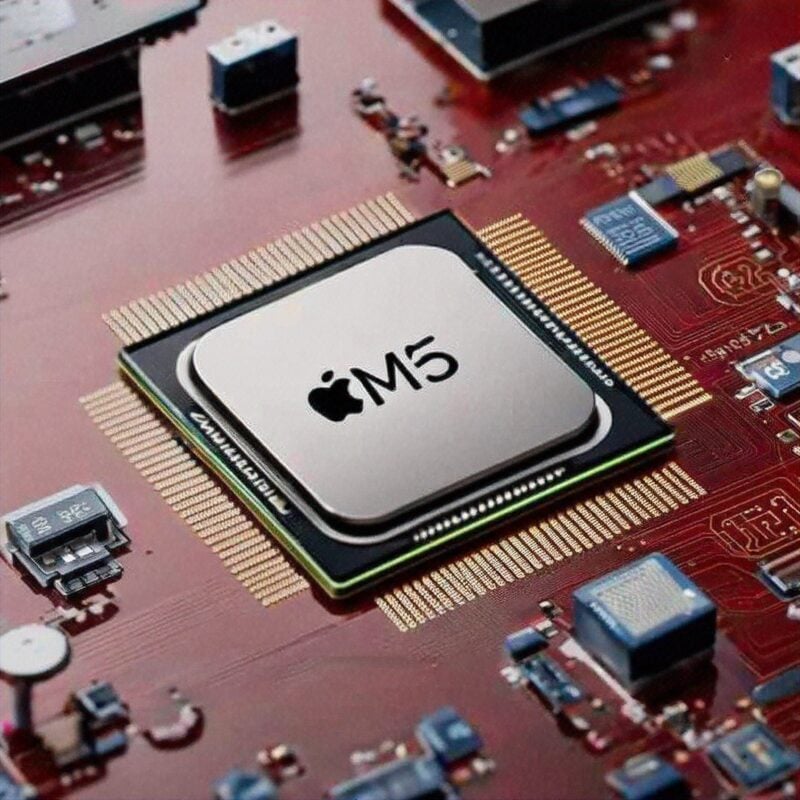TLDRs;
- Apple launches M5 chip with 4x GPU compute power for AI workloads compared to M4.
- Built on advanced 3nm architecture with a 10-core GPU and 16-core Neural Engine.
- Powers new MacBook Pro, iPad Pro, and Vision Pro with unified 153GB/s memory bandwidth.
- Delivers up to 45% faster graphics and improved energy efficiency for sustainability goals.
Apple has officially unveiled its next-generation M5 chip, bringing what it calls a “quantum leap” in on-device artificial intelligence performance. The chip debuts in the new 14-inch MacBook Pro, iPad Pro, and Vision Pro, all of which are now available for pre-order.
The M5 represents Apple’s most ambitious step yet toward a unified AI computing ecosystem. Built on third-generation 3-nanometer process technology, the chip delivers more than four times the peak GPU compute power for AI workloads compared to its predecessor, the M4.
Apple claims that this architecture can handle complex generative AI tasks directly on the device, reducing reliance on cloud servers while improving performance, security, and privacy.
A Powerhouse of Performance and Efficiency
At the heart of the M5 lies a 10-core GPU, with each core equipped with its own Neural Accelerator, a major architectural advancement that enables AI workloads to be distributed efficiently across the GPU. Alongside it sits a 16-core Neural Engine dedicated solely to machine learning operations.
The CPU also packs up to 10 cores, delivering 15% faster multithreaded performance than the M4, while the GPU achieves up to 45% higher graphics output.
Apple introduces the new M5 chip
GPU ~30% faster than M4
Much faster on-device AI
30% more unified memory bandwidth: 153GB/sThey put the chip in:
Vision Pro
iPad Pro
Macbook Prohttps://t.co/LsWf8XvSyP pic.twitter.com/2TDH1Hqw4F— Marques Brownlee (@MKBHD) October 15, 2025
Apple’s engineers also upgraded the chip’s unified memory bandwidth to 153GB/s, nearly 30% higher than before. This means the CPU, GPU, and Neural Engine now share a memory pool that allows large AI models to run locally, bypassing the limitations of separate video memory systems.
Designed for the AI Era
Apple said the M5’s design was inspired by the growing demand for AI-driven applications, from real-time video editing and AR experiences to large language model processing.
According to internal benchmarks, the chip can handle a 16K-token prompt using an 8-billion-parameter language model up to 3.5 times faster than its predecessor. While independent third-party tests are still pending, early performance numbers suggest that Apple has closed the gap between mobile AI chips and discrete GPUs used in data centers.
This advancement positions Apple not just as a hardware innovator but as a serious contender in the race for on-device AI dominance.
Sustainability and Global Strategy
Beyond performance, Apple is using the M5 to advance its sustainability and supply chain diversification goals. The company said the chip’s improved energy efficiency supports its long-term carbon neutrality targets.
The launch also coincides with Apple’s ongoing manufacturing shift toward Vietnam, where the company plans to build smart home devices, including a 7-inch display hub and AI-enabled security cameras. This diversification effort marks a steady move away from its heavy reliance on Chinese manufacturing.
By coupling local production strategies with cutting-edge AI silicon, Apple is reinforcing both its technological and geopolitical resilience.
The Future of Apple’s AI Ambitions
With the M5, Apple is signaling that its ecosystem is ready for a new era of on-device intelligence. Whether it’s the iPad Pro for creatives, the MacBook Pro for professionals, or the Vision Pro for mixed reality enthusiasts, each device now carries the computational power to handle advanced AI workflows natively.
As Apple continues to blend hardware innovation with AI capability, the M5 chip could become the defining foundation of its next decade of computing, where intelligence doesn’t just live in the cloud, but right in your hands.





